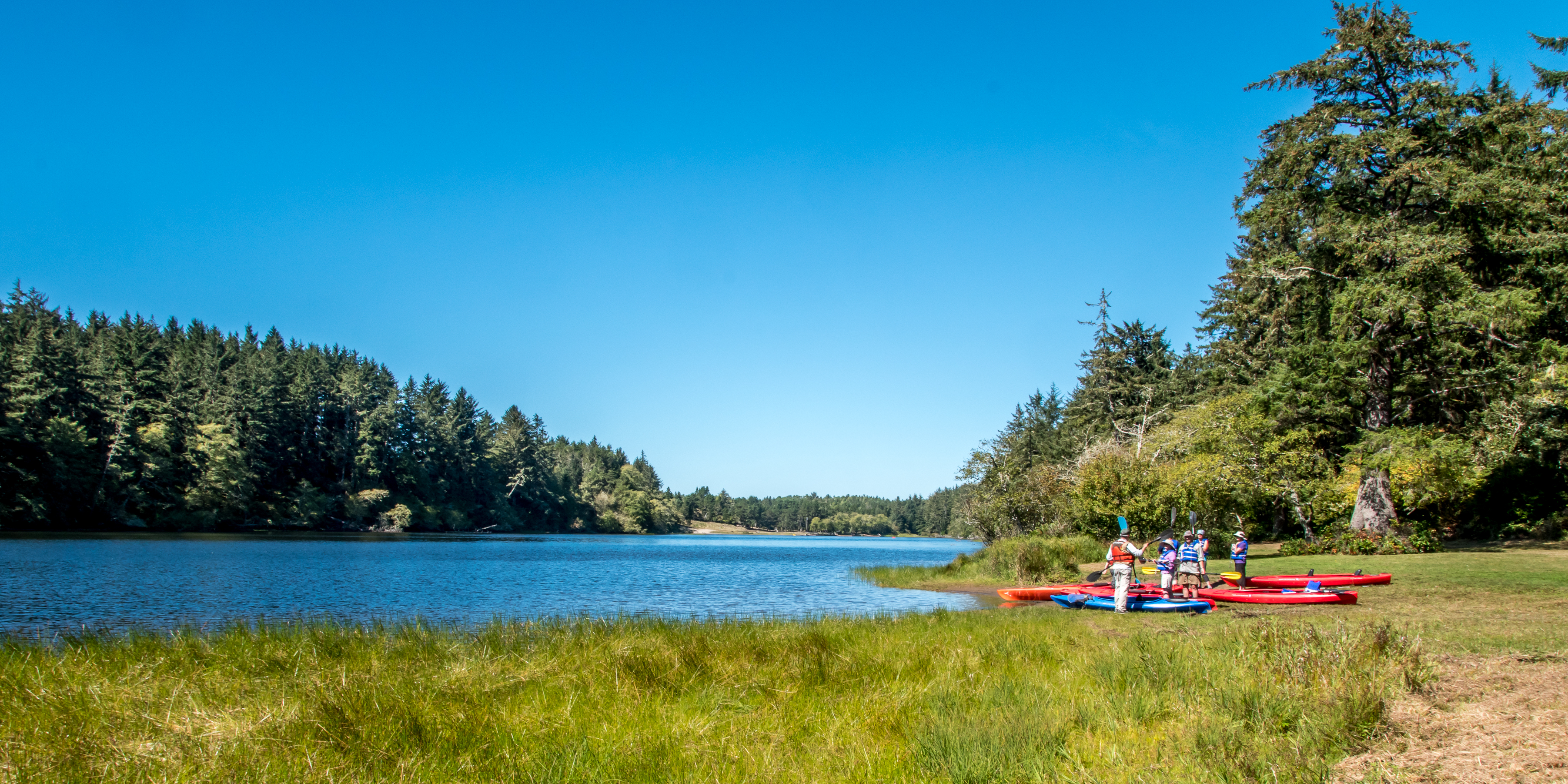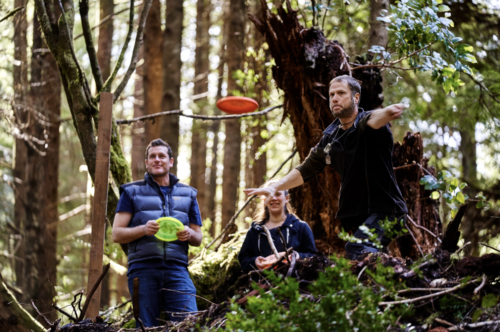
Photo courtesy of Denis LeBlanc
Fort Stevens State Park has a wealth of things to do that appeal to many interests, including this nice paddling spot. Coffenbury Lake, named after the first European settler of the land, was formed by the buildup of rainwater between large dunes along the beach about 150 years ago. Chemical interactions within the sand in the dunes can create an impermeable bottom that collects rain over many years. The typical dune lake only lasts about 100 years before wind and water gradually fill the lake with sand and vegetation. The perimeter of Coffenbury Lake was planted to contain erosion, and the result is a long-lived lake that is beautifully set in a forested valley by the sea.
The lake is only about a mile long and very narrow. A few hours can easily be filled with a paddle around the lake, and the chances of spotting heron, osprey, elk and deer from the water are good. There are docks at the northern end, some with picnic tables, and restrooms are located at either end of the access road that parallels the lake. It is a very short walk on a paved path from the Fort Stevens Campground, so carrying kayaks to the lake is easy for campers. For those driving in, the large parking area at the end of the access road is the best spot to start. There is a well-used beach for launching and a small dock that could be used as well.
While at Coffenbury, take the dirt road at the south parking lot to the isolated Crabapple Lake. Too overgrown to paddle, it is still a great place to see wildlife and observe the slow death of a dune lake.



